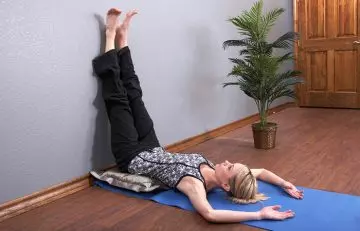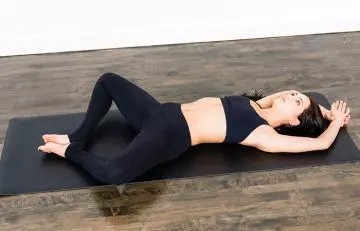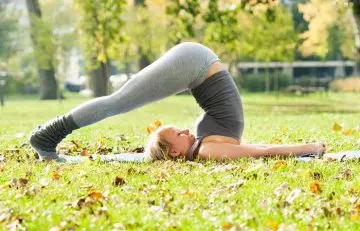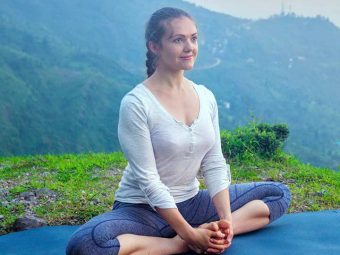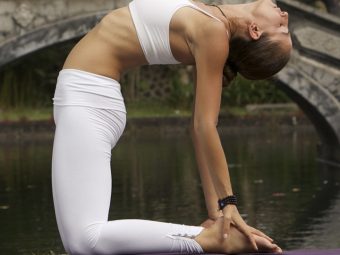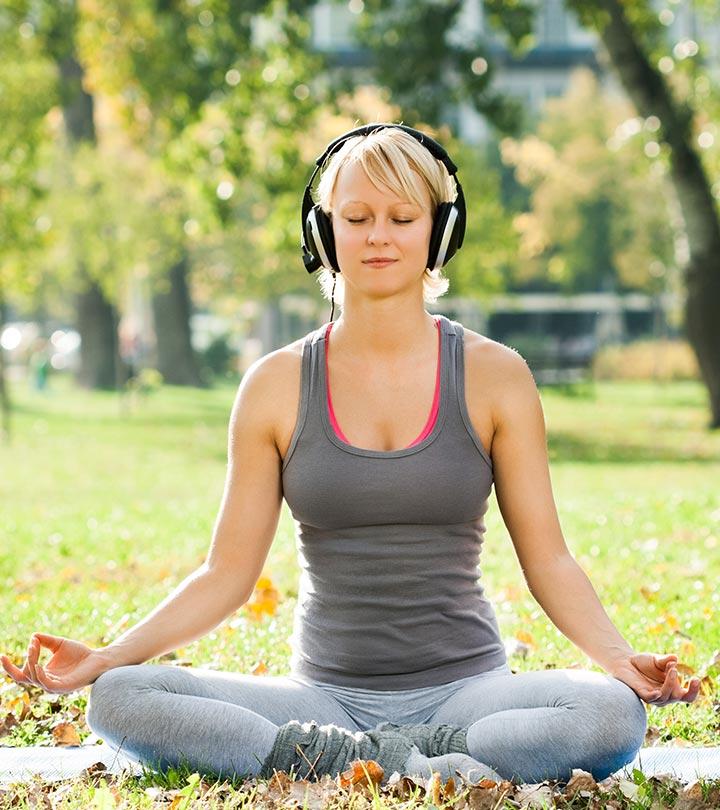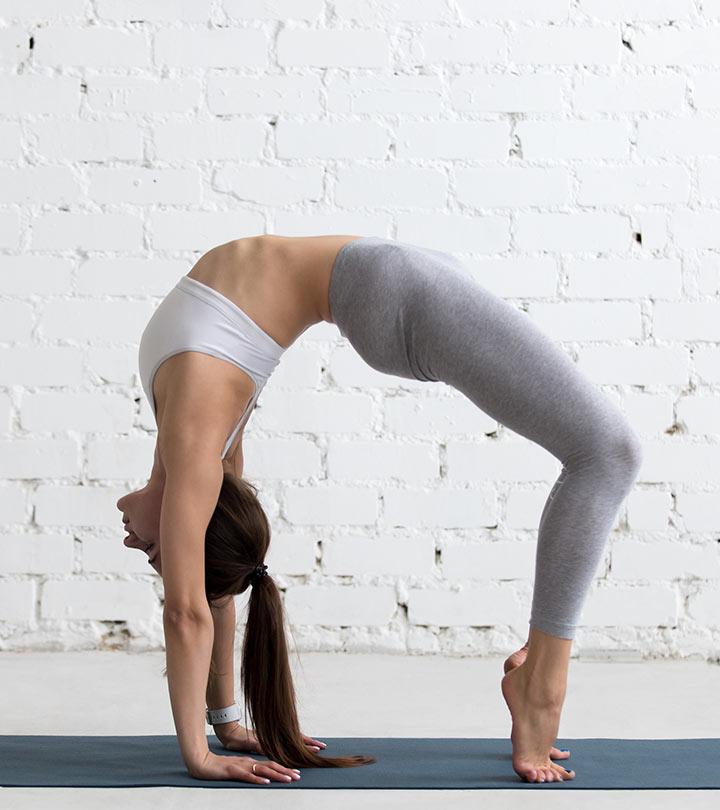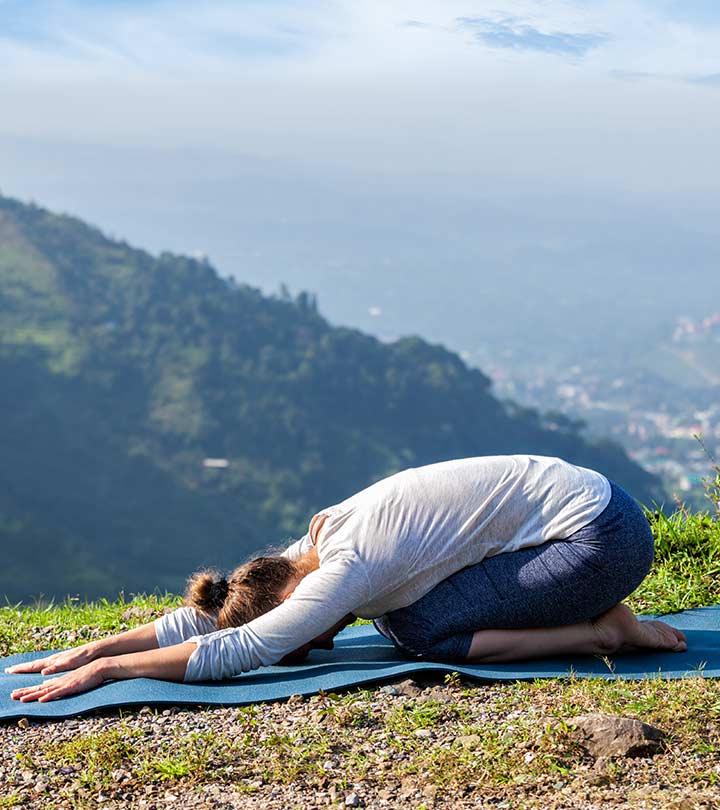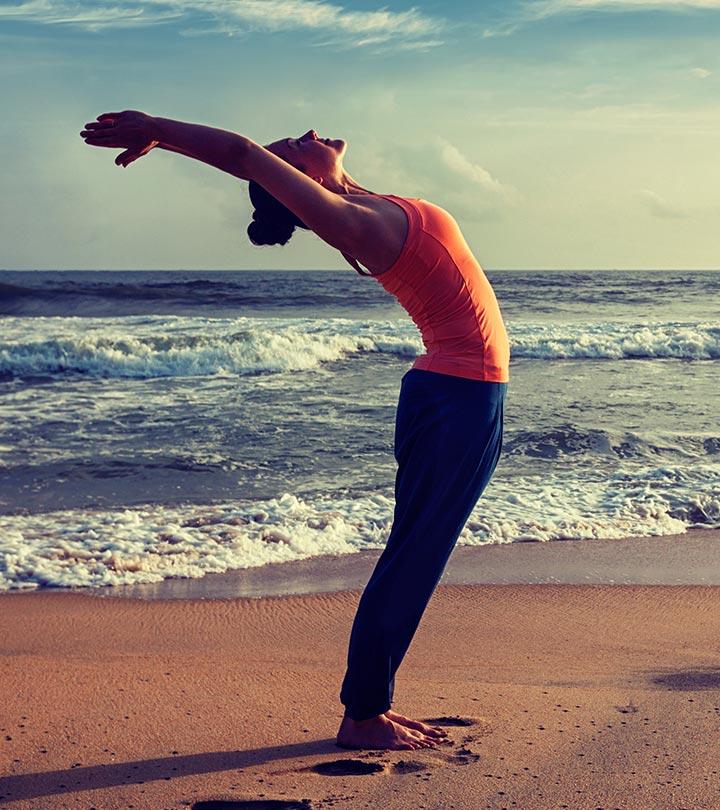7 Comforting Yoga Asanas That Will Help You Deal With Vertigo
Balance your center and relax your worries with some powerful yoga poses.

Image: i Stock
Feeling dizzy in love may be pleasurable, but it can be the worst feeling in the world otherwise. If you are pregnant or inebriated, you might be able to live with it as this dizziness is temporary, but if you have vertigo, yoga will save you! In this article, we talk about all the yoga asanas to treat vertigo. Take a look!
In This Article
What Is Vertigo?
Vertigo is a disorder associated with a disturbance in the sense of balance and equilibriumi XA number of external forces acting on the body that produces no change in the state of motion or rest. in the brain, and this causes dizziness. It usually affects the area responsible for the direction of motion, which is found in the inner ear and called the vestibular system.
According to a report released by the National Center for Biotechnology Information (NCBI), dizziness associated with vertigo annually affects about 15% to 20% of adults. The annual incidence is at 1.4% while the 1-year prevalence is about 5%. The report also suggests that the prevalence increases with age and is more common in women than in men.
The causes could be anything – ranging from a lack or drop in blood flow to the ear, calcium or fluid accumulation, or even due to a viral attack. Well, even a simple virus that causes cold or flu can also attack the inner ear and affect the nerve connectors to the brain, causing severe vertigo. Damage to the skull also causes a loss of hearing, nausea, and dizziness. A tumor, syphilis,i XA bacterial infection spread via sexual contact which causes genital and oral sores and nerve, brain, or heart damage. or multiple sclerosisi XA chronic condition that directly affects the protective covering of the nerves, disrupting brain-body communication. can also affect your sense of balance.
 Trivia
TriviaHow Does Yoga Help To Cure Vertigo?
Some yoga poses work on the nervous system and strengthen it. These poses also work on the balance centers and the inner ear, and help build concentration and focus. Yoga works on the sympathetic and parasympathetic nervous systemsi XPart of the autonomic nervous system that alerts the body to danger, resulting in increased heart rate and sweating. and increases the circulation in the head and the rest of the body.
However, during the vertigo attack, its better to rest for a time period when the severity of the malady is at its peak and wait for symptoms to subside and and thereafter start the practice. If the vertigo is BPPV (Benign Paroxysmal Positional Vertigo), it would be sensible to go in the postures very slowly and avoid any jerky actions, especially with the neck and head.
7 Asanas That Will Help You Overcome A Vertigo Attack
- Balasana
- Paschimottanasana
- Viparita Karani
- Supta Baddha Konasana
- Halasana
- Salamba Sirsasana
- Shavasana
1. Balasana
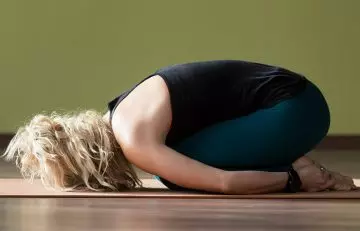
Also Known As – Child’s Pose
Benefits – This asana is a relaxing pose. It is meant to calm the mind and ease the pressure of the nervous system. At the onset of a vertigo attack, a restorative pose such as this will help you get a hold of your self. This asana helps strengthen the nervous system with regular practice as well as with meditation or mindfulness. Yoga poses act as holistic exercises to improve your health and wellness.
How To Do It – Come onto your fours. Now, bring the feet together as you widen your knees. Rest the abdomen on the thighs and your buttocks on the feet. Place your forehead on the ground. Bring your arms around you, alongside your legs. You can hold your feet with your palms. Hold the pose for a few minutes, and release.
To know more about this asana, click here: Balasana
2. Paschimottanasana
Also Known As – Seated Forward Bend, Intense Dorsal Stretch
Benefits – This asana is a great stress reliever. It helps balance emotions and relieves anger, anxiety, and irritability. It increases the blood flow in the head and the balance centers, which makes it a head position that can help with vertigo. Your nervous system is strengthened with this asana.
How To Do It – Assume the Dandasana. Then, stretch the arms above the head, and gently bend forward. Depending on how flexible you are, you can either touch your toes or catch your feet. Lower your head as much as you possibly can. Hold the pose for a few seconds, and then release. Make sure that you are not straining your low back or rounding your upper back.
To know more about this asana, click here: Paschimottanasana
3. Viparita Karani
Also Known As – Legs Up The Wall
Benefit – This asana is primarily benefits those who have vertigo. It calms the mind and relieves headaches associated with the problem as this posture contributes to a healthy venous blood flow, allowing for greater relaxation and switching off pain receptors. Closing your eyes also helps you regain
How To Do It – Sit across a wall and raise your legs up using the support of the wall. Lie down gently and stretch out your arms to the sides, folding them at the elbows so as to resemble a cactus. Place your palms facing upwards. Once you are comfortable, close your eyes and take long, deep breaths. Release after a few minutes.
To know more about this asana, click here: Viparita Karani
4. Supta Baddha Konasana
Also Known As – Reclining Bound Angle Pose
Benefits – This asana works on the centers of balance, and almost instantly reduces dizziness. It improves the blood circulation throughout the body, including the head. It is also an extremely comforting pose that calms your nerves and your mind.
How To Do It – Lie on your back. Bend your knees, and bring your feet together, thereby opening up your legs on the side. Raise your arms above your head. Relax. Release when you are satisfied.
5. Halasana
Also Known As – Plow Pose
Benefits – This asana strengthens the neck. As it does that, it works on the balance system, the inner ears, and the nervous system. It releases the stress on the nervous system, reduces neck tension and calms your mind. It helps tackle the side effects of vertigo with ease.
How To Do It – Lie on your back. Support your waist with your hands, and lift your feet and back off the ground, coming into the Salamba Sarvangasana. Now, gently lower your legs such that your feet come onto the ground, and your toes are in line with your head. Stretch out your arms in the direction of the legs. Hold the pose until you are comfortable. To come out, gently lift your legs up and release.
6. Salamba Sirsasana
Also Known As – Supported Head Stand
Benefits – This asana works against gravity and instantly supplies the nerve endings with richer nutrients in the upper (head) extremities, aiding optimal recovery or at least providing symptomatic relief. The nutrient-rich blood is helpful to fight any toxins and aid healing. Over time, it reduces dizziness, and with regular practice, it eradicates vertigo. This asana also calms your nervous system. However, given the bouts of diziness, it is better to attempt the posture with the support of a wall. In case one is already feeling disoriented, it is better to avoid this posture until the symptoms become manageable.
How To Do It – Kneel down on the floor. Place your arms on the ground in front of you and interlace your fingers. Your elbows must be shoulder width apart. Now, put your head on the floor, fitting your crown against your clasped palms. Inhale, lift your knees off the ground, and walk towards your elbows. Exhale and lift your feet off the floor. Place your legs perpendicular to the floor. Hold the pose for a few seconds, slowly progressing to longer durations. Release.
To know more about this asana, click here: Salamba Sirsasana
7. Shavasana
Also Known As – Corpse Pose
Benefits – This asana completely relaxes the body. It removes all strain and stress and helps you regain focus. It is another pose that helps combat dizziness almost instantly.
How To Do It – Lie flat on your back, with your palms resting beside you, facing upwards. Make yourself comfortable and ensure that your body is in a straight line. Close your eyes and focus on each and every part of your body. Take deep, cleansing breaths. Slip into a meditative state, but try not to fall asleep.
To know more about this asana, click here: Shavasana
Yoga Poses To Avoid
While we have seen the many yoga poses that help manage vertigo, there are a few that can worsen it. Avoid the following yoga asanas:
- Handstand (Adho Mukha Vrksasana): The upside-down position can trigger vertigo and worsen dizziness.
- Backbends (Various Poses): Neck extensions can stimulate the inner ear structures and alter blood flow to the brain, causing dizziness.
- Revolved Triangle Pose (Parivrtta Trikonasana): The twisting action while facing down can exacerbate the symptoms of vertigo.
- Downward-Facing Dog (Adho Mukha Svanasana): The inversion can lead to discomfort and make one feel dizzy as it can alter the inner ear fluid distribution and decrease oxygen supply to the brain.
- Forward Folds (Various Poses): These may worsen vertigo as they reduce blood flow to the brain by compressing the blood vessels in the neck and exerting pressure on the inner ear structures.
Christy, a yoga teacher and blogger who battles with vertigo, shares how yoga may lead to a vertigo episode and how to prevent it. She suggests avoiding poses that make you feel dizzy. She writes, “For example, if you find that camel pose (ustrasana) makes you dizzy or makes the world spin (vertigo), then while the rest of the class is doing camel – you can sit in heroes pose (seated on your heels) and breathe (i).” Christy also talks about modifying the poses to avoid dizziness. She adds, “For me – camel pose is fine as long as I don’t drop my head back. I lengthen the back of my neck and keep my gaze forward. I also don’t take the full pose (hands to heels) and keep them on my lower back instead.”
 Quick Tip
Quick TipThings To Remember When You Practice Yoga For Vertigo
These are a few things you must keep in mind if you are practicing yoga for vertigo:
- Always consult your doctor before you start yoga. Once your medical practitioner approves, look for a certified yoga instructor to assist you with your practice.
- Discuss your problems with your instructor so that he/she might suggest modifications to basic yoga poses, making them safe for practice.
- If you practice yoga regularly, make sure you do so with a wall close by for support in case you lose balance while working out.
- If you do practice forward bends, stand up or sit down very slowly.
- Always be mindful of how you place your neck. Avoid looking up at your arms in a pose that requires you to do so.
- Back bending poses that require you to hang your head might cause dizziness.
- Do not hold your breath at any point in time.
- During your practice, if you feel dizzy at any point, stop immediately, and come into the Balasana.
- It is best to avoid forward bends and downward facing poses if you have vertigo.
- Make sure you practice yoga slowly if you have vertigo. This will help you avoid dizziness.
Infographic: Top 5 Yoga Asanas To Overcome Vertigo
Blurred vision, headache, lack of balance, feeling of being pulled, and ringing in the ears! These common signs of vertigo can make everyday life a task. Lucky for you, yoga can help. It can act as an alternative medicine and therapy to naturally treat vertigo. Scroll down to the infographic below and check out the top 5 poses that can help you overcome the symptoms of vertigo.

Illustration: StyleCraze Design Team
Yoga asanas to treat vertigo are highly effective as they strengthen the nervous system, work on the balance centers, and improve circulation in the head. These poses calm the mind, take the pressure off the nervous system, relieve stress, treat vertigo-associated headaches, strengthen the neck, and improve focus and concentration. However, wait for the symptoms to recede before doing these yoga poses to prevent dizziness. Also, practice these poses slowly and do not go for quick movements or jerks if you have BPPV. Consult a doctor before starting yoga to be on the safe side.
Frequently Asked Questions
Is shanmukhi mudra good for vertigo?
Yoga practitioners claim that shanmukhi mudra can calm your nervous system and mind, and may help calm symptoms of vertigo. It may also reduce irritation and anxiety.
Can vertigo be cured permanently?
Yes, most cases of vertigo are readily treatable with time and effective treatments, such as physical therapy, medications, and surgery (1). However, you must always consult your doctor before opting for any of these treatments.
Can yoga asanas be done by people of all ages to treat vertigo?
Yes, but they should do it under the guidance of an expert to treat vertigo. Health experts believe that yoga can activate the nervous system and build concentration and focus to alleviate vertigo symptoms. However, there are no relevant studies to support this claim.
Can meditation help with vertigo?
Yes, anecdotal evidence suggests that meditation can help minimize the symptoms of vertigo, such as dizziness.
Key Takeaways
- Vertigo disrupts the balance in the brain, causing nausea and dizziness.
- Yoga asanas improve balance by calming the nervous system and increasing blood circulation.
- Paschimottanasana and Shavasana increase blood flow, balance emotions, and act as effective stress relievers.
- Viparita Karani is effective in treating headaches
- Stop right away if any asana makes you feel lightheaded.
Personal Experience: Source
StyleCraze's articles are interwoven with authentic personal narratives that provide depth and resonance to our content. Below are the sources of the personal accounts referenced in this article.
i. Help! My yoga practice makes me dizzy!https://dizzyyoga.wordpress.com/2016/02/16/help-my-yoga-practice-makes-me-dizzy/
References
Articles on StyleCraze are backed by verified information from peer-reviewed and academic research papers, reputed organizations, research institutions, and medical associations to ensure accuracy and relevance. Read our editorial policy to learn more.






